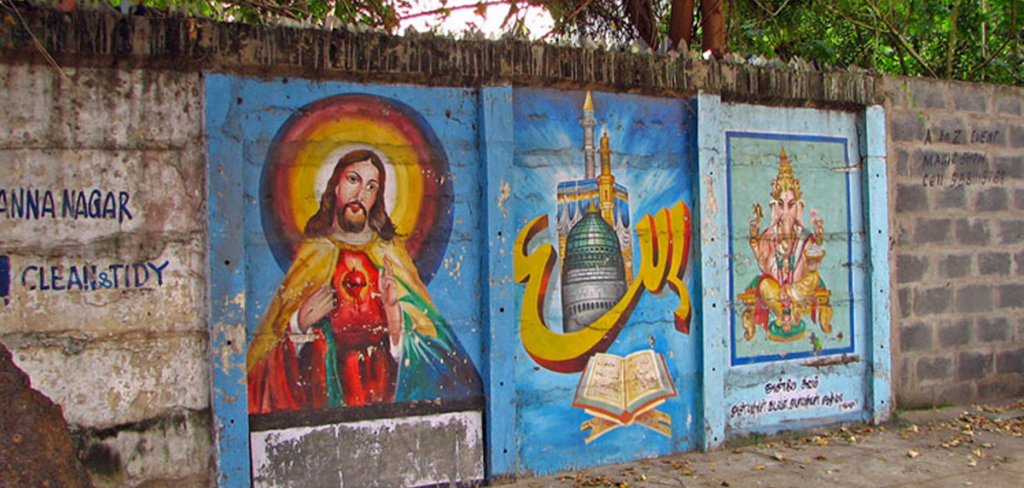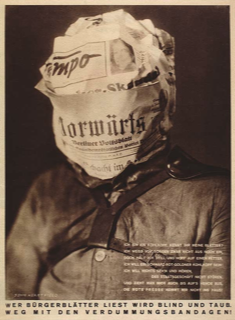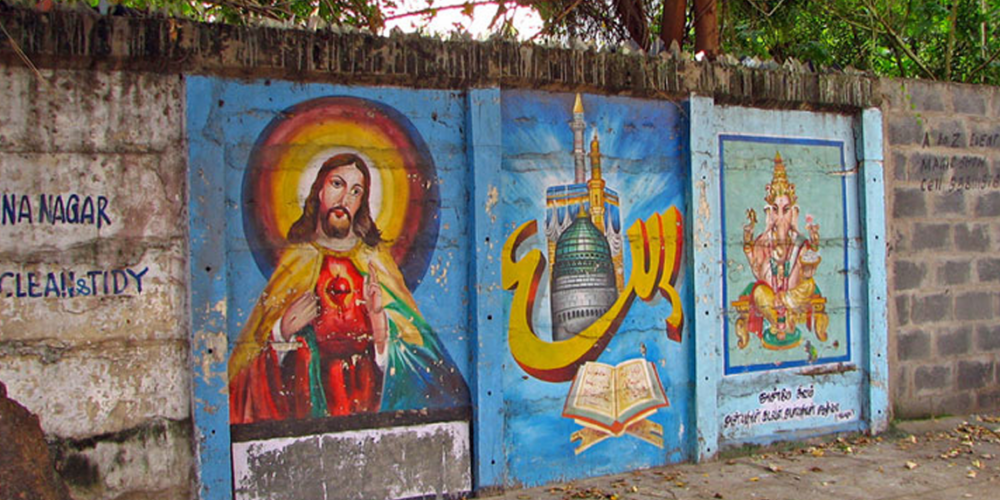An Croí Ró-Naofa san India
A bilingual tanka (5-7-5-7-7 syllables), in response to a mural in Chennai. The tanka is the oldest form of verse still being cultivated today, stretching back 1,300 years to its beginnings in Japan.

an Croí Ró-Naofa ar lasadh i ngach cistin fadó in Éirinn ar bhallaí san India is cosc ar mhún poiblí é
look, the Sacred Heart that shone in Irish kitchens now no longer glows it found its way to India protecting walls from urine
Saving the World
Gabriel presents a bilingual haiku in response to the work of the internationally acclaimed Belgian photographer Alain Schroeder (b. 1955).

save this save that yes, yes . . . and the orangutan too
sábháil seo sábháil siúd sea, sea . . . is an t-órang útan leis
The Reader of Bourgeois Newspapers
This a a tanka in Irish and English in 5-7-5-7-7 syllables. The inspiration for Gabriel’s tanka comes from the Dada artist John Heartfield, who created this piece in 1930, declaring, “Whoever reads bourgeois newspapers becomes blind and deaf!” Heartfield was a German artist famous for his photomontages in the communist magazine AIZ.

tá náire orm ag léamh nuachtán buirgéiseach! maith dhom é, led’ thoil ní léifidh mé arís iad thruaillíos croí is aigne
I am so ashamed reading bourgeois newspapers! please, please forgive me I’ll never read one again my heart and mind are sullied
■ Gabriel Rosenstock believes that cultural and linguistic diversity should go hand in hand with maintaining biodiversity. His latest book, Mullah Nasrudin Is Alive and Well (New York: Cross-Cultural Communications, 2022), is a collection of satirical tales. His page at Culture Matters: tinyurl.com/2p93253n.






